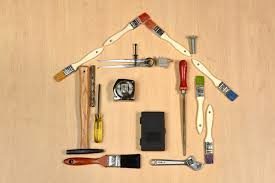Armed with your toolkit and trying to same money. Then you should take care of your home improvement projects on your own. Be careful because inexperience can leave you injured.
The most common mistake DIY-ers can make is to jump into a project without the skills and knowledge needed to complete it accurately and safely. Still, completing a home improvement task can be a point of pride for homeowners, and DIY-ing will always be popular. So if you do decide to jump into a home improvement project, you should you look out for the following hazards?
Nails and other sharp objects
How you’re most likely to hurt yourself: Puncture wound
How to prevent an injury: Nails, screws, tacks, and bolts cause 30% of all home improvement injuries, so keep your work area clean. Don’t count on your shoes to stop a nail from stabbing your foot, so “if you do manage to get stabbed, make sure to get a tetanus shot,” says Nathan Outlaw, CEO of Onvico, a general contracting company based in Thomasville, GA.
Ladders
How you’re most likely to hurt yourself: Fracture
How to prevent an injury: The biggest risk with ladders is that of a fall if the ladder is not secure with its feet set properly on the ground.
“Having someone hold a wobbly ladder is not an answer for a ladder that is not placed properly,” Outlaw says. “If the ladder starts to tilt or fall, there’s a slim chance the person holding it will be able to steady or catch the ladder.” That can ultimately injure both of you.
Another ladder no-no: climbing too high on an A-frame ladder. Yes, it looks cool, but you’re not in an action movie.
“The top of the ladder and the step down from it really shouldn’t be used,” says Outlaw. “It’s best to always make sure you have a place to hold on and brace yourself.”
Saws (manual and power)
How you’re most likely to hurt yourself: Laceration
How to prevent an injury: Remember, a saw can cut wood or metal, so it will have no problem slicing through skin. Fingers are by far the most common targets if you’re using a table or bench saw, but when using any type of saw, keep fingers and hands away from the blade.
Don’t wear anything that is going to get caught in the saw, and tie back long hair (if you have it).
It’s also important to wear eye protection so you don’t get blasted with sawdust.
Hammers
How you’re most likely to hurt yourself: Contusion or abrasion
How to prevent an injury: Swinging a hammer can be hazardous if you miss the nail and hit a finger instead. Some injuries can even send you to the emergency room. Hammers were responsible for only about 7% of home improvement injuries, but if you think about how often people swing a hammer during a project, there’s much cause for concern.
When to call a pro
Just because roofers can spend all day working on the roof doesn’t mean it’s something everyone can, or should, do. Be realistic about your skillset and know your limits. Even if you start a project and hit a roadblock, don’t be embarrassed to call a pro to finish the task.
“There is no shame in allowing a professional to take over and finish a project,” Outlaw says.
If you’re having trouble deciding whether to DIY or call a professional, ask yourself these questions.
Do you have the tools?
If a project calls for specialized tools and equipment that you don’t have, you might want to leave that one to the pros. While you may think doing it yourself will save you cash, “at the end of the day, the cost to purchase or rent the tools or equipment may cost the same— or even more—than it would to hire a pro,” Hicks says.
Do you know how to use those tools? (Be honest)
It can be hard to anticipate all of the safety risks of using certain tools if you don’t know how to operate them. A pro will know how to safely and efficiently use power tools to complete the project, while someone less experienced might make a mistake or—worst-case scenario—cause an injury.
Do you have the time?
Even if you have the skills and the tools necessary, keep in mind the time commitment the project will take. Before you don your hard hat, map out how long the project is going to take.
“If it appears to be too big of a commitment, it’s a good time to call in a pro,” says Hicks. “The last thing you want to do is cut corners on a project because of time restrictions.”
It’s better to be safe than punctured, lacerated, and/or fractured.
Find a recommended pro at NextDoor.com for help with projects.

